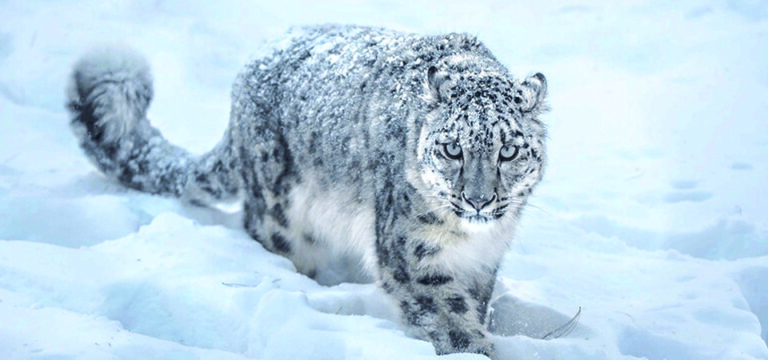
Two snow leopards were successfully collared in Shey Phoksundo National Park (SPNP) recently.
Collared on May 19 in the Rapka area of Saldang, the first leopard was named Ghangri Ghapi Hyul. The enigmatic 7-year-old male cat weighed 37 kgs. The second snow leopard was collared in the Dhora area of Saldang on May 25, and was named Langyen. This 6-year-old male adult snow leopard weighed 38 kgs. Both collared snow leopards were reportedly in sound health and are ranging normally after being fitted with the satellite-GPS collars, according to WWF (World Wildlife Fund).
The WWF press release said that both cats will be closely monitored by the national park and conservation biologists over the next 18 months. The GPS collar connected to the leopards periodically transmits the location of the animal providing invaluable information on the animal’s habitat, their spatial behaviour, as well as transboundary movement patterns, contributing towards conservation planning for the species through habitat management, conflict mitigation or otherwise.
“The science derived from collaring expeditions such as these are critical in strengthening conservation and management in the Western Himalayan Snow Leopard Landscape, a region known to have the highest snow leopard density in Nepal,” said Dr Pem Narayan Kandel, Ministry of Forests and Environment Secretary.
According to WWF, this is the second satellite telemetry expedition undertaken in SPNP, following the first one conducted in 2019 where two male snow leopards were successfully collared. The satellite collaring of these big cats brings up Nepal’s tally of satellite collared snow leopards to eight. The first four were collared in Kanchenjunga Conservation Area between 2012 and 2017, and the other two in the SPNP in 2019.
The recent satellite telemetry expeditions were undertaken following the government’s decision in 2018 to study and research the movement of the species through the installation of GPS collars on four snow leopards in SPNP, Dolpa.
A team of 30 members comprising staffers from the SPNP Office, wildlife experts, technicians, and veterinarians from WWF Nepal and the National Trust for Nature Conservation along with local citizen scientists, were involved in the expedition this year.
“The use of cutting-edge technology and data generated from the research and monitoring of the snow leopard using satellite collars will support the effective planning and management of species conservation within the park as well as in mitigating human-leopard conflict for the betterment of Himalayan biodiversity,” said Deepak Kumar Kharal, PhD, Department of National Parks and Wildlife Conservation Director General.
“Despite the ongoing pandemic, these efforts showcase the commitment of the government and local communities during one of the most challenging times of our lives” stated Dr Ghana S. Gurung, WWF Nepal Country Representative.
The satellite telemetry expedition was led by the Department of National Parks and Wildlife in partnership with WWF Nepal, the National Trust for Nature Conservation, and citizen scientists from the local Snow Leopard Conservation Committee. WWF-UK, WWF Belgium, WWF Canada, and WWF Germany provided financial support for the collaring.
Source : THE RISING NEPAL,





